Antoine Lesage-Landry
Simulation of a closed-loop dc-dc converter using a physics-informed neural network-based model
Jun 23, 2025Abstract:The growing reliance on power electronics introduces new challenges requiring detailed time-domain analyses with fast and accurate circuit simulation tools. Currently, commercial time-domain simulation software are mainly relying on physics-based methods to simulate power electronics. Recent work showed that data-driven and physics-informed learning methods can increase simulation speed with limited compromise on accuracy, but many challenges remain before deployment in commercial tools can be possible. In this paper, we propose a physics-informed bidirectional long-short term memory neural network (BiLSTM-PINN) model to simulate the time-domain response of a closed-loop dc-dc boost converter for various operating points, parameters, and perturbations. A physics-informed fully-connected neural network (FCNN) and a BiLSTM are also trained to establish a comparison. The three methods are then compared using step-response tests to assess their performance and limitations in terms of accuracy. The results show that the BiLSTM-PINN and BiLSTM models outperform the FCNN model by more than 9 and 4.5 times, respectively, in terms of median RMSE. Their standard deviation values are more than 2.6 and 1.7 smaller than the FCNN's, making them also more consistent. Those results illustrate that the proposed BiLSTM-PINN is a potential alternative to other physics-based or data-driven methods for power electronics simulations.
Sliced-Wasserstein Distance-based Data Selection
Apr 17, 2025Abstract:We propose a new unsupervised anomaly detection method based on the sliced-Wasserstein distance for training data selection in machine learning approaches. Our filtering technique is interesting for decision-making pipelines deploying machine learning models in critical sectors, e.g., power systems, as it offers a conservative data selection and an optimal transport interpretation. To ensure the scalability of our method, we provide two efficient approximations. The first approximation processes reduced-cardinality representations of the datasets concurrently. The second makes use of a computationally light Euclidian distance approximation. Additionally, we open the first dataset showcasing localized critical peak rebate demand response in a northern climate. We present the filtering patterns of our method on synthetic datasets and numerically benchmark our method for training data selection. Finally, we employ our method as part of a first forecasting benchmark for our open-source dataset.
Federated Learning for UAV-Based Spectrum Sensing: Enhancing Accuracy Through SNR-Weighted Model Aggregation
Nov 17, 2024Abstract:The increasing demand for data usage in wireless communications requires using wider bands in the spectrum, especially for backhaul links. Yet, allocations in the spectrum for non-communication systems inhibit merging bands to achieve wider bandwidth. To overcome this issue, spectrum-sharing or opportunistic spectrum utilization by secondary users stands out as a promising solution. However, both approaches must minimize interference to primary users. Therefore, spectrum sensing becomes vital for such opportunistic usage, ensuring the proper operation of the primary users. Although this problem has been investigated for 2D networks, unmanned aerial vehicle (UAV) networks need different points of view concerning 3D space, its challenges, and opportunities. For this purpose, we propose a federated learning (FL)-based method for spectrum sensing in UAV networks to account for their distributed nature and limited computational capacity. FL enables local training without sharing raw data while guaranteeing the privacy of local users,lowering communication overhead, and increasing data diversity. Furthermore, we develop a federated aggregation method, namely FedSNR, that considers the signal-to-noise ratio observed by UAVs to acquire a global model. The numerical results show that the proposed architecture and the aggregation method outperform traditional methods.
Sliced-Wasserstein-based Anomaly Detection and Open Dataset for Localized Critical Peak Rebates
Oct 29, 2024



Abstract:In this work, we present a new unsupervised anomaly (outlier) detection (AD) method using the sliced-Wasserstein metric. This filtering technique is conceptually interesting for integration in MLOps pipelines deploying trustworthy machine learning models in critical sectors like energy. Additionally, we open the first dataset showcasing localized critical peak rebate demand response in a northern climate. We demonstrate the capabilities of our method on synthetic datasets as well as standard AD datasets and use it in the making of a first benchmark for our open-source localized critical peak rebate dataset.
Online Convex Optimization for On-Board Routing in High-Throughput Satellites
Sep 02, 2024Abstract:The rise in low Earth orbit (LEO) satellite Internet services has led to increasing demand, often exceeding available data rates and compromising the quality of service. While deploying more satellites offers a short-term fix, designing higher-performance satellites with enhanced transmission capabilities provides a more sustainable solution. Achieving the necessary high capacity requires interconnecting multiple modem banks within a satellite payload. However, there is a notable gap in research on internal packet routing within extremely high-throughput satellites. To address this, we propose a real-time optimal flow allocation and priority queue scheduling method using online convex optimization-based model predictive control. We model the problem as a multi-commodity flow instance and employ an online interior-point method to solve the routing and scheduling optimization iteratively. This approach minimizes packet loss and supports real-time rerouting with low computational overhead. Our method is tested in simulation on a next-generation extremely high-throughput satellite model, demonstrating its effectiveness compared to a reference batch optimization and to traditional methods.
Wasserstein Distributionally Robust Shallow Convex Neural Networks
Jul 23, 2024



Abstract:In this work, we propose Wasserstein distributionally robust shallow convex neural networks (WaDiRo-SCNNs) to provide reliable nonlinear predictions when subject to adverse and corrupted datasets. Our approach is based on a new convex training program for ReLU shallow neural networks which allows us to cast the problem as an exact, tractable reformulation of its order-1 Wasserstein distributionally robust equivalent. Our training procedure is conservative by design, has low stochasticity, is solvable with open-source solvers, and is scalable to large industrial deployments. We provide out-of-sample performance guarantees and show that hard convex physical constraints can be enforced in the training program. WaDiRo-SCNN aims to make neural networks safer for critical applications, such as in the energy sector. Finally, we numerically demonstrate the performance of our model on a synthetic experiment and a real-world power system application, i.e., the prediction of non-residential buildings' hourly energy consumption. The experimental results are convincing and showcase the strengths of the proposed model.
A Scalable Architecture for Future Regenerative Satellite Payloads
Jul 08, 2024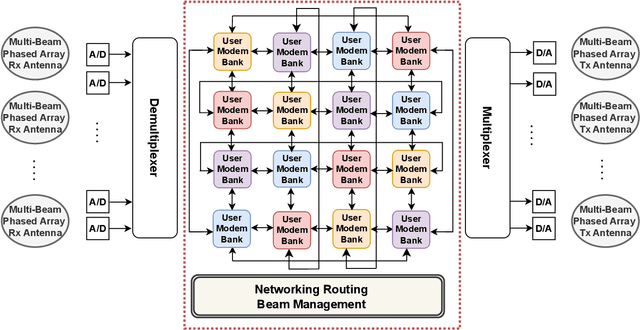
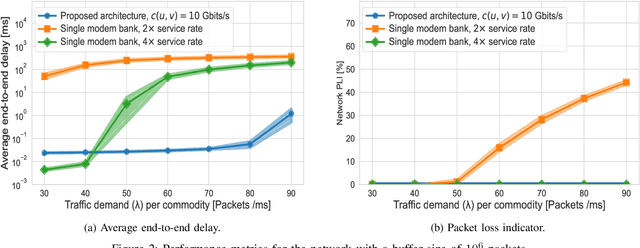
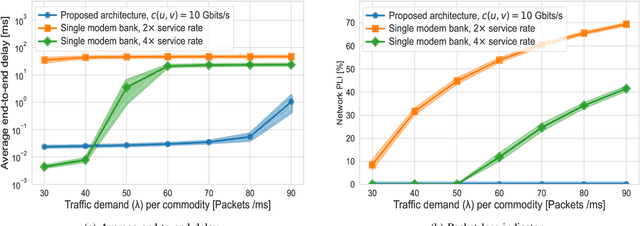
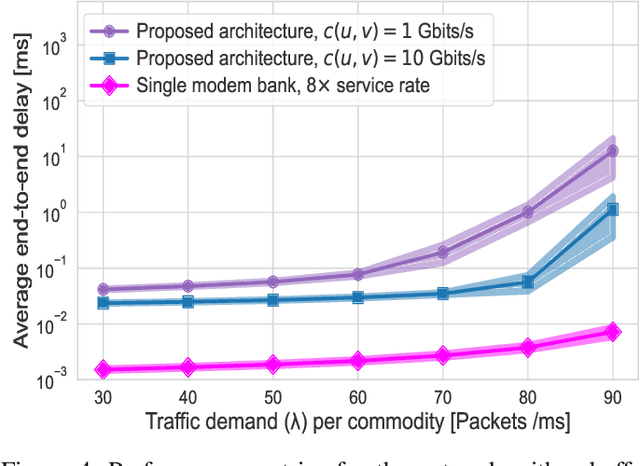
Abstract:This paper addresses the limitations of current satellite payload architectures, which are predominantly hardware-driven and lack the flexibility to adapt to increasing data demands and uneven traffic. To overcome these challenges, we present a novel architecture for future regenerative and programmable satellite payloads and utilize interconnected modem banks to promote higher scalability and flexibility. We formulate an optimization problem to efficiently manage traffic among these modem banks and balance the load. Additionally, we provide comparative numerical simulation results, considering end-to-end delay and packet loss analysis. The results illustrate that our proposed architecture maintains lower delays and packet loss even with higher traffic demands and smaller buffer sizes.
Efficient Data-Driven MPC for Demand Response of Commercial Buildings
Jan 28, 2024Abstract:Model predictive control (MPC) has been shown to significantly improve the energy efficiency of buildings while maintaining thermal comfort. Data-driven approaches based on neural networks have been proposed to facilitate system modelling. However, such approaches are generally nonconvex and result in computationally intractable optimization problems. In this work, we design a readily implementable energy management method for small commercial buildings. We then leverage our approach to formulate a real-time demand bidding strategy. We propose a data-driven and mixed-integer convex MPC which is solved via derivative-free optimization given a limited computational time of 5 minutes to respect operational constraints. We consider rooftop unit heating, ventilation, and air conditioning systems with discrete controls to accurately model the operation of most commercial buildings. Our approach uses an input convex recurrent neural network to model the thermal dynamics. We apply our approach in several demand response (DR) settings, including a demand bidding, a time-of-use, and a critical peak rebate program. Controller performance is evaluated on a state-of-the-art building simulation. The proposed approach improves thermal comfort while reducing energy consumption and cost through DR participation, when compared to other data-driven approaches or a set-point controller.
Tensor-based Space Debris Detection for Satellite Mega-constellations
Nov 20, 2023
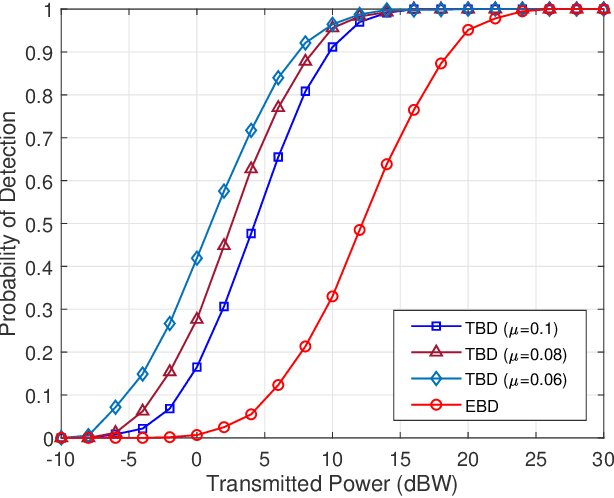
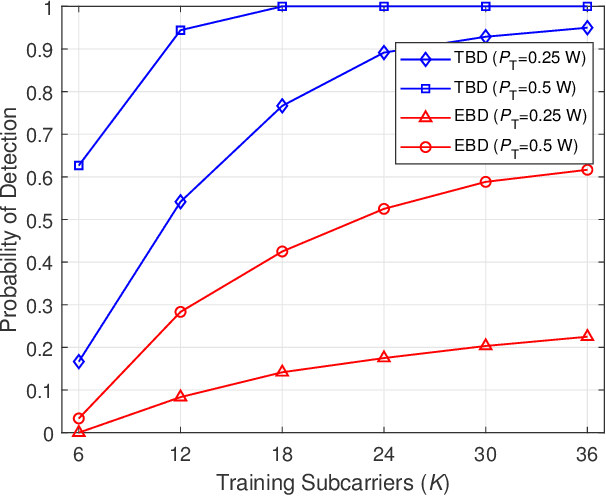
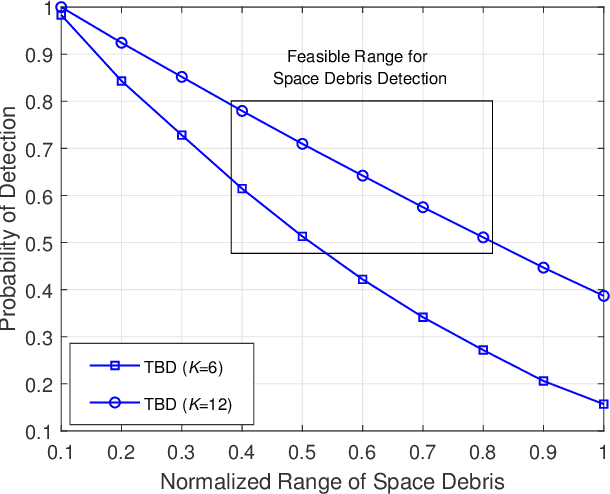
Abstract:Thousands of satellites, asteroids, and rocket bodies break, collide, or degrade, resulting in large amounts of space debris in low Earth orbit. The presence of space debris poses a serious threat to satellite mega-constellations and to future space missions. Debris can be avoided if detected within the safety range of a satellite. In this paper, an integrated sensing and communication technique is proposed to detect space debris for satellite mega-constellations. The canonical polyadic (CP) tensor decomposition method is used to estimate the rank of the tensor that denotes the number of paths including line-of-sight and non-line-of-sight by exploiting the sparsity of THz channel with limited scattering. The analysis reveals that the reflected signals of the THz can be utilized for the detection of space debris. The CP decomposition is cast as an optimization problem and solved using the alternating least square (ALS) algorithm. Simulation results show that the probability of detection of the proposed tensor-based scheme is higher than the conventional energy-based detection scheme for the space debris detection.
Quality of Service-Constrained Online Routing in High Throughput Satellites
Oct 11, 2023Abstract:High Throughput Satellites (HTSs) outpace traditional satellites due to their multi-beam transmission. The rise of low Earth orbit mega constellations amplifies HTS data rate demands to terabits/second with acceptable latency. This surge in data rate necessitates multiple modems, often exceeding single device capabilities. Consequently, satellites employ several processors, forming a complex packet-switch network. This can lead to potential internal congestion and challenges in adhering to strict quality of service (QoS) constraints. While significant research exists on constellation-level routing, a literature gap remains on the internal routing within a singular HTS. The intricacy of this internal network architecture presents a significant challenge to achieve high data rates. This paper introduces an online optimal flow allocation and scheduling method for HTSs. The problem is treated as a multi-commodity flow instance with different priority data streams. An initial full time horizon model is proposed as a benchmark. We apply a model predictive control (MPC) approach to enable adaptive routing based on current information and the forecast within the prediction time horizon while allowing for deviation of the latter. Importantly, MPC is inherently suited to handle uncertainty in incoming flows. Our approach minimizes packet loss by optimally and adaptively managing the priority queue schedulers and flow exchanges between satellite processing modules. Central to our method is a routing model focusing on optimal priority scheduling to enhance data rates and maintain QoS. The model's stages are critically evaluated, and results are compared to traditional methods via numerical simulations. Through simulations, our method demonstrates performance nearly on par with the hindsight optimum, showcasing its efficiency and adaptability in addressing satellite communication challenges.
 Add to Chrome
Add to Chrome Add to Firefox
Add to Firefox Add to Edge
Add to Edge